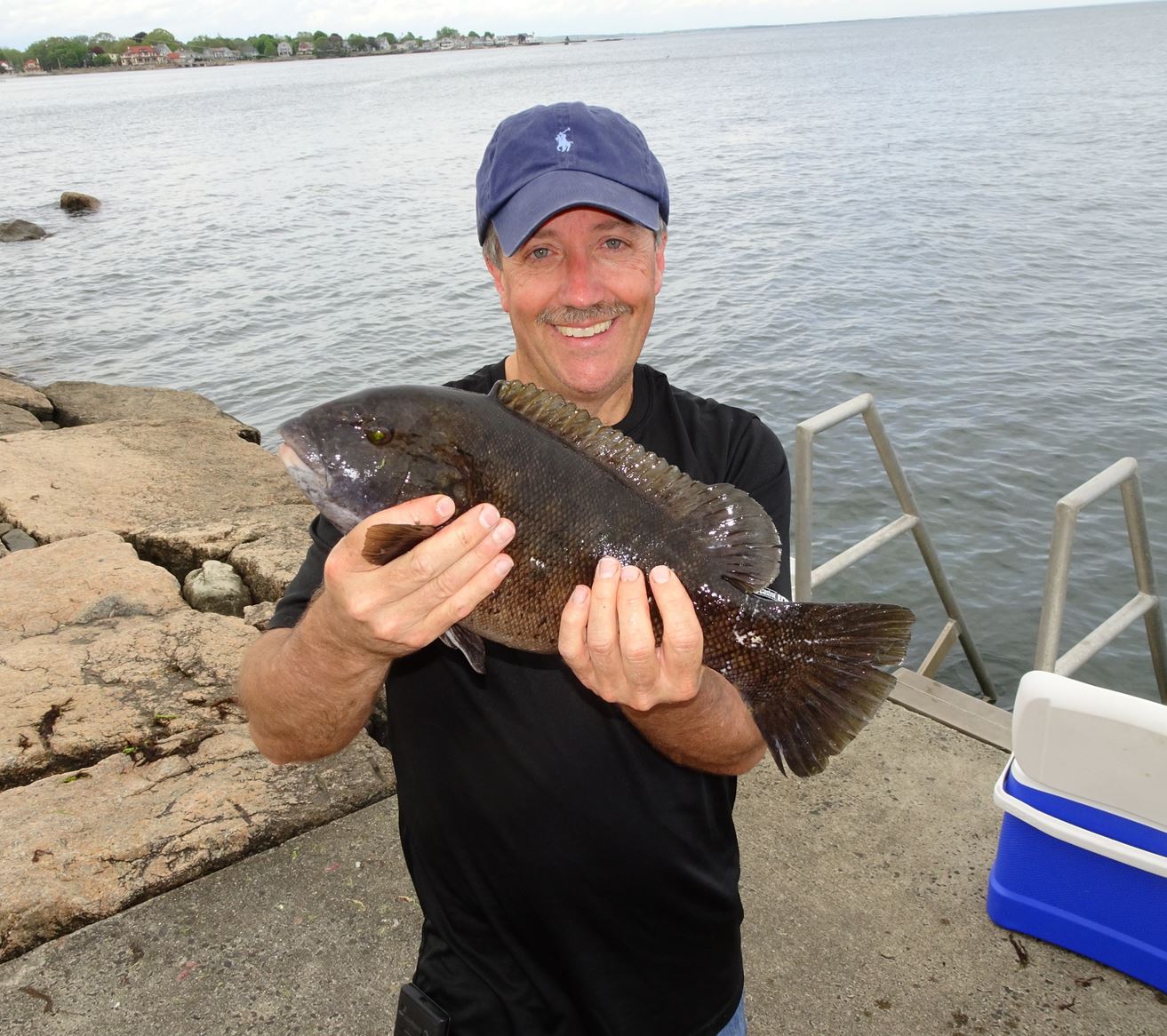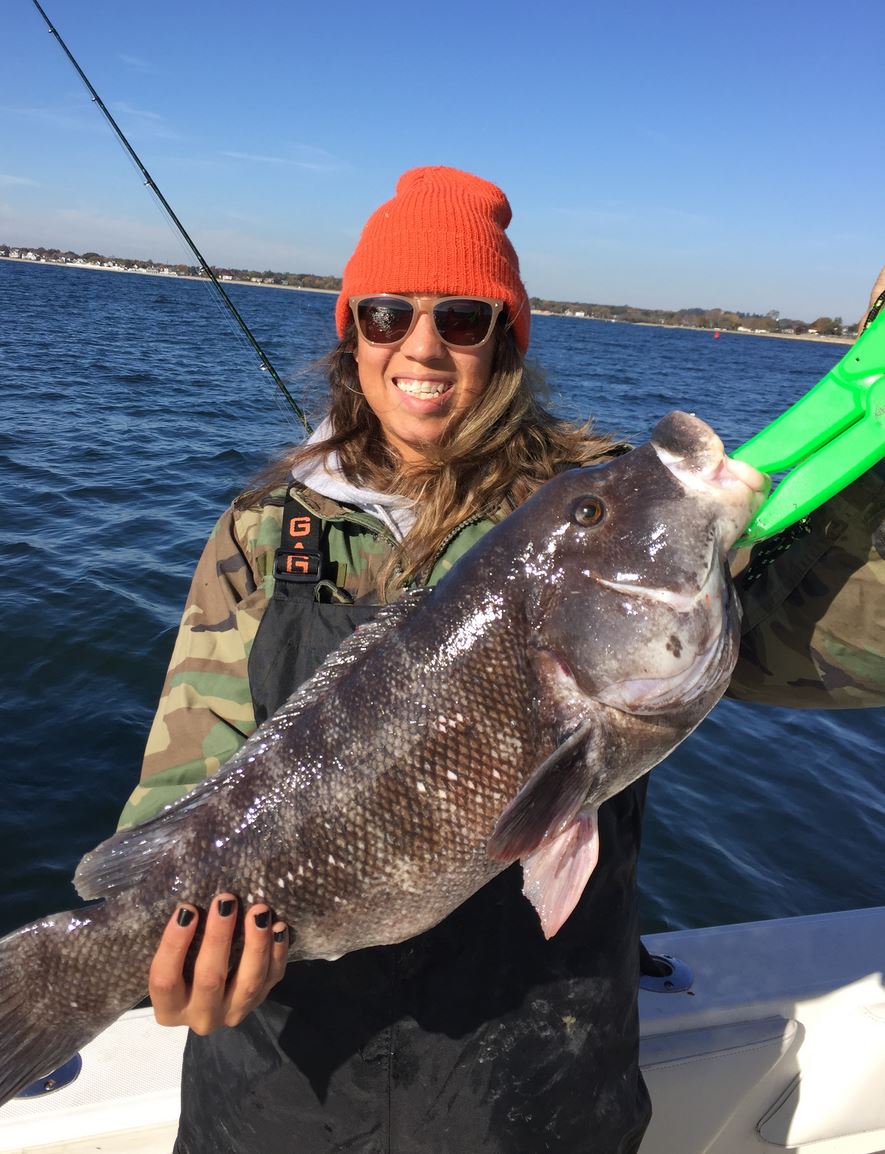Top Tips for Tautog (Blackfish)
The fall season will see countless Connecticut anglers dust off their gear in search of one of the homeliest fish our state has to offer – the tautog (Tautoga onitis), also known as blackfish, or tog for short. While they might not be much to look at, the anglers who target these wily fish are rewarded with thrilling fights and great eating, making them one of the most popular recreational fisheries in Long Island Sound.
Where to Find Tautog
Tautog stick close to various types of structure, such as boulders, reefs, jetties, and wrecks. To catch them, you will need to find good structure and get your bait right on top of it. It helps to be impatient here – if tautog are around and hungry they usually won’t be shy. This means that if you aren’t getting any bites after a few casts it’s time to move on.
Adult tautog spend the winter months offshore in deep water. In spring, as water temperatures warm, they move inshore to spawning and feeding areas. Many anglers might be surprised to know that throughout the spring and summer, tautog frequent shallow water less than 10’ (3.05 m) deep, often feeding right near shore among the rocks that are inundated at high tide.
As water temperatures begin to drop in the fall, tog undertake a gradual migration back to their offshore wintering areas, collecting on rocky structure in progressively deeper water as temperatures cool. At the start of Connecticut’s fall season in October, tautog fishing is usually good in shallow water, around 8’ to 20’ (2.44 m to 6.1 m), but by the end of the season in November, fishing is usually best on deeper structure in 30’ to 50’ (9.14 to 15.24 m) of water.
If you’re a novice tautog angler and are looking for a tip on a good tog fishing spot in your area, a local bait & tackle shop is a great resource.
The Gear
Tautog are exceptionally strong fighters. Given the chance, they will pull your rig into nearby structure and break your line in the process. For this reason, a strong and stout medium to fast action rod is your best bet for getting them in the net.
A popular setup is a basic two-hook rig baited with green crabs, which are readily available at most bait and tackle shops during the fall. For line, 30 – 50 lb. braid with a heavy monofilament or fluorocarbon leader will help you pull fish out of jagged rocks and boulders with a tightly set drag.
The Rub
Due to their popularity and slow growth rates, tautog are vulnerable to overfishing. Fishing regulations for tautog in Connecticut have become more restrictive over time to help keep the fishery sustainable, going from a 12” (30.48 cm) minimum size and no limit on harvest back in the early 1990s to the current 16” (40.64 cm) minimum size with closed seasons and a 2-3 fish limit.
Unfortunately, a 2016 study on Long Island Sound’s tautog done by the Atlantic States Marine Fisheries Commission (ASMFC) found that tautog are still overfished (there are too few mature adults) and experiencing overfishing (annual harvest is too high). The State of Connecticut and the ASMFC will continue to implement management strategies to rebuild this fishery, including a new commercial harvest tagging program to crack down on the illegal live fish trade.
It’s a tough sell, but one way Connecticut anglers can help tautog in Long Island Sound is to consider throwing the big ones back. In tautog populations, the older, larger fish are highly valuable. A large female tautog will make 20 to 80 times as many eggs per pound as a small female. The eggs from these large females are also higher quality, leading to better offspring survival. For these reasons and others, it’s prudent to respect our elders.
Opening day of the fall Tautog (Blackfish) season is October 10, 2021. This fish is a perennial fall favorite of many anglers. Tog love to chomp on crabs (hermit, green, or Asian shore). Each angler is allowed 3 fish per day provided they are at least 16” (40.64 cm) in length.
By: Andrew Bade, Connecticut Fisheries Division


